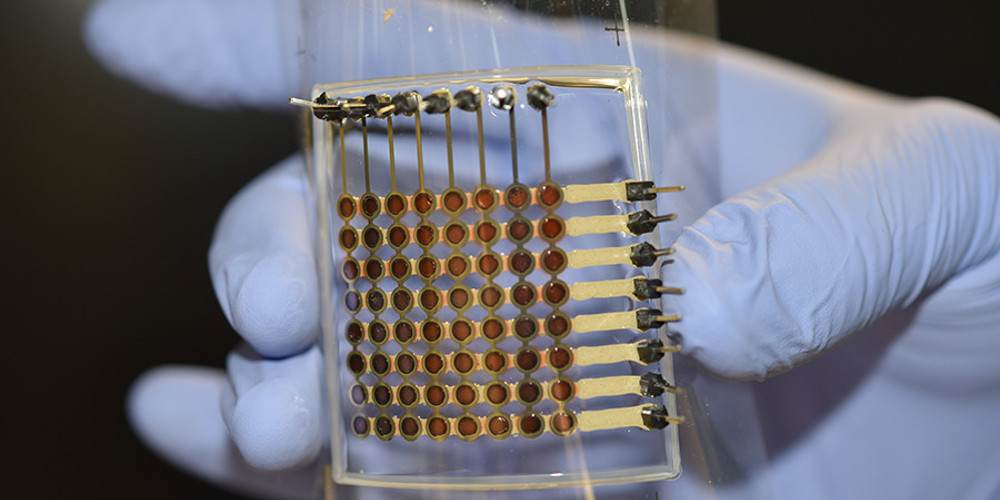Will the days of electronics stores end soon? American scientists predict: in the future, everyone will be able to produce flexible OLED screens themselves – using a 3D printer!
This OLED display was created entirely in a 3D printer.
Foto: McAlpine Group, University of Minnesota
3D printers are a great technology that opens up completely new possibilities in many areas. Their development is progressing at a tremendous pace. Printers are getting faster and more complex and can sometimes handle entirely new dimensions. Production of complete components at the push of a button is no longer a vision of the future. Researchers have also had amazing successes in the electronics sector, but a project by scientists at the University of Minnesota Twin Cities has reached an entirely new dimension in the field: the team has succeeded in creating a flexible light-emitting diode (OLED) display. ) in 3D printing. The results of the subsequent test were amazing.
These innovations will shape the future
Small size 3D printer instead of large production systems for OLED screens
In an OLED display, a layer of organic matter is used to convert electricity into light. The result is digital advertising that can be designed flexibly and is already pervasive in everyday life. Among other things, they are used for television screens and monitors. Smartphones are equipped with it on a smaller scale. The advantages are obvious: they are light, energy-saving, thin and flexible. At the same time, it provides a wide viewing angle and high contrast ratio.
However, production is not entirely cheap. “OLED displays are typically manufactured in large, expensive, and very clean production facilities,” says Michael McAlpine, a professor in the University of Minnesota’s Department of Mechanical Engineering. “We wanted to see if we could simplify all of this and print an OLED screen on a tabletop 3D printer.” Because of course it is not a commercial model, but a custom one. According to McAlpine, the cost of the device is about the same as the Tesla Model S.
Two methods of 3D printing for OLED screen combined
Before developing this 3D printer, the team started several similar tests, but none of them achieved the desired results. It turns out that standardizing the light-emitting layers in particular is difficult. Other teams only achieve good performances using other methods, such as spin coating or thermal evaporation.
So the researchers went a new way and decided on two different printing processes to print the six required layers of the components: They printed the electrodes, connections, insulation and packaging using an extrusion process, while spraying the active layers into the chamber. temperature. The highlight: They succeeded in combining the two processes in the special printer so that the prototype could only be produced with this one machine. The screen was about 1.5 inches on each side and had 64 pixels.
OLED screen in function test
That was the theory, but the practical test was crucial, and scientists were also surprised: each pixel turned on and projected light. “I thought something good would be created, but not a fully functional show,” said Ruitao Su, who was in charge of the project. “But then it turned out that all the pixels were working and I was able to display the text I had designed.”
As desired, the screen, created using the 3D printing process, is flexible. In addition, it can be packaged in a packaging material, which is why it is suitable for a large number of applications. “The device showed relatively stable emission over 2,000 flexible cycles, indicating that fully 3D-printed OLEDs could potentially be used for important applications in soft electronics and wearable devices,” says Su.
Portable 3D printer as a vision of the future
Next, the researchers want to adapt 3D printing so that they can produce displays with higher resolutions and greater brightness. “It’s not hard to imagine that in a few years we can transfer this process to a small portable printer to print all kinds of displays at home or on the go,” says McAlpine.
Read more about innovations in 3D printing:
“Social media evangelist. Baconaholic. Devoted reader. Twitter scholar. Avid coffee trailblazer.”
Continue Reading










More Stories
Longest jets in the universe discovered – giant particle streams as long as 140 Milky Way galaxies in a row
New method reveals 307 supernova remnants
Snapchat is upping the ante on augmented reality glasses